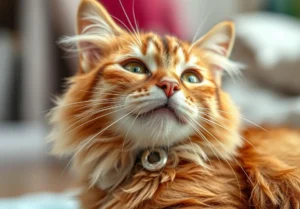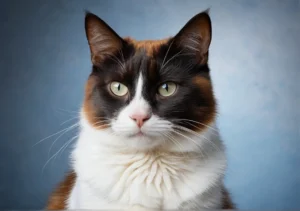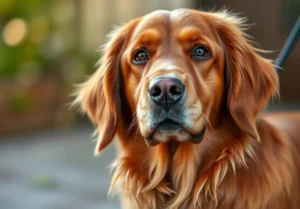Hairless cats are a unique and intriguing breed, often garnering attention for their lack of fur. But have you ever noticed that some hairless cats actually grow hair? In this blog post, we will explore the fascinating reasons behind why hairless cats can develop hair, shedding light on this uncommon phenomenon.
Hairless Cats: The Explanation
Genetic Factors
When it comes to hairless cats, their ability to grow hair is largely influenced by genetic factors. While these cats are typically bred to be hairless due to a natural mutation, it’s not uncommon for them to still exhibit some degree of hair growth. This can be attributed to the complex nature of genetics.
Interestingly, hairless cats can carry a recessive gene for fur, which may manifest in occasional hair growth. This means that even though they may appear bald, they still have the potential to produce hair follicles under certain circumstances. Genetic variations and inheritance patterns can play a significant role in determining whether a hairless cat will grow hair or not.
Hormonal Influences
Have you ever wondered why some hairless cats end up growing hair despite their breed characteristics? Hormonal influences can be a key factor in this phenomenon. Just like humans, cats’ hormone levels can fluctuate and impact their hair growth patterns.
In some cases, certain hormonal imbalances or changes in a hairless cat’s body can stimulate the growth of new hair follicles. This can lead to the surprising emergence of a furry coat on a cat that was once thought to be completely bald. Hormones such as estrogen, testosterone, and thyroid hormones all play a role in regulating hair growth in cats.
Additional Unique Angle:
In addition to genetics and hormones, factors such as overall health, diet, and environmental conditions can also influence a hairless cat’s hair growth. Ensuring your feline friend has a balanced diet, access to plenty of water, and a stress-free environment can contribute to their overall well-being and potentially affect their hair growth patterns positively.
Environmental Factors
Hairless cats, such as the Sphynx breed, can surprisingly grow hair due to various environmental factors. These feline friends may develop a fine layer of fur in response to changes in temperature and sunlight exposure. The body of a hairless cat aims to regulate its temperature effectively, and sometimes, growing hair helps in this natural process. So, if you notice your hairless cat sprouting a bit of fluff, it might be nature’s way of adapting to its surroundings.
Additional Unique Insight:
- Regular grooming and skin care can also play a role in stimulating hair growth in hairless cats. Gentle brushing and proper hygiene practices can promote the development of a healthy coat on these unique feline companions.
Health Considerations
The overall health and well-being of a hairless cat can significantly impact its hair growth patterns. Proper nutrition filled with essential vitamins and minerals can influence the quality and growth of fur in these remarkable creatures. If a hairless cat experiences any health issues or nutritional deficiencies, it may lead to varying degrees of hair growth. Keeping your hairless cat healthy and happy through balanced meals and regular veterinary check-ups is crucial for maintaining optimal fur development.
Helpful Resource: For more information on hairless cat health and care, check out this comprehensive guide on hairless cat grooming.
Grooming Practices
Hairless cats may seem low-maintenance when it comes to shedding, but grooming is still crucial for their skin health. Hairless cats can grow hair due to their genetics, hormonal changes, or environmental factors. Regular bathing helps remove oils and dead skin cells, preventing issues like acne or skin infections. Remember to moisturize their skin to prevent dryness, as hairless cats are prone to sunburns.
Fun Facts about Hairless Cats
Did you know that hairless cats are not actually hypoallergenic? Their saliva and skin still produce allergens, but some people with allergies may tolerate them better. Interestingly, hairless cats have a higher body temperature than other cats, so they love to snuggle for warmth. Despite their lack of fur, hairless cats can still experience skin conditions like rashes or sunburn, making grooming and skin care essential for their well-being. Next time you spot a hairless cat, remember they have a unique charm that goes beyond their lack of fur!
Common Misconceptions
Hairless cats do grow hair, contrary to popular belief. The hair growth in hairless cats can vary from individual to individual, with some growing a fine layer of fur, while others have more noticeable patches of hair. It’s essential to understand that hairless cats are not entirely devoid of hair-producing genes, which is why they can exhibit hair growth. This natural variation in hair growth among hairless cats can sometimes lead to misunderstandings about their genetic makeup.
Care Tips for Hairless Cats
Caring for a hairless cat involves unique grooming needs compared to traditional furry breeds. Regular baths are crucial to keep their skin clean and healthy, as they lack the protection of a full fur coat. Moisturizing their skin with pet-safe lotions can also help prevent dryness and irritation. Additionally, it’s important to provide your hairless cat with ample warmth, especially in colder climates, as they are more susceptible to temperature changes due to their lack of fur insulation.
One unique insight into caring for hairless cats is the importance of sun protection. Just because they lack fur doesn’t mean they are immune to sunburn. Applying pet-safe sunscreen to exposed areas when taking your hairless cat outdoors can help prevent sun damage and keep their skin healthy. Remember, protecting your hairless cat from harmful UV rays is an essential part of their grooming routine.
Hairless Cat Breeds
Have you ever wondered why hairless cats, like the Sphynx or the Donskoy, actually grow hair despite their name? Well, here’s the scoop. While these breeds are known for their lack of fur, they do actually have a fine layer of hair covering their bodies, much like peach fuzz on a human. This hair may vary in length and thickness depending on the individual cat and its genetics. So, even though they may be “hairless,” these feline friends still sport some strands here and there.
And here’s an intriguing tidbit: some hairless cat breeds, such as the Peterbald, can experience fluctuations in their amount of hair. Factors like age, hormones, and even temperature can influence the growth and thickness of their hair. So, don’t be surprised if your hairless cat suddenly starts sprouting a bit more fur—it’s just part of their fascinating genetic makeup.
Key Insight: Even breeds marketed as hairless may have some hair, so don’t be shocked if your supposedly bald cat ends up with a little fluff here and there.
Hairless Cat Fashion
Let’s talk style when it comes to our sleek hairless feline pals. Dressing up your hairless cat isn’t just about making a fashion statement—it can also serve a practical purpose. Since these cats lack the insulation that fur provides, they can get chilly easily. That’s where cat clothing and accessories come into play, keeping your beloved pet warm and cozy.
When it comes to hairless cat fashion, the options are endless. From snuggly sweaters to adorable hats, there are plenty of ways to up your cat’s style game while ensuring their comfort. Plus, dressing up your cat can be a fun bonding experience for both of you. So, next time you’re browsing the pet store, why not pick up a cute outfit or two for your hairless companion?
Key Tip: Opt for clothing made from soft, breathable fabrics to keep your hairless cat comfortable and stylish at the same time.
Helpful Resource: If you’re looking for trendy and functional hairless cat clothing and accessories, check out this link for a variety of options: Hairless Cat Fashion
Alex, a passionate animal lover, has experience in training and understanding animal behavior. As a proud pet parent to two dogs and three cats, he founded AnimalReport.net to share insights from animal experts and expand his knowledge of the animal kingdom.




